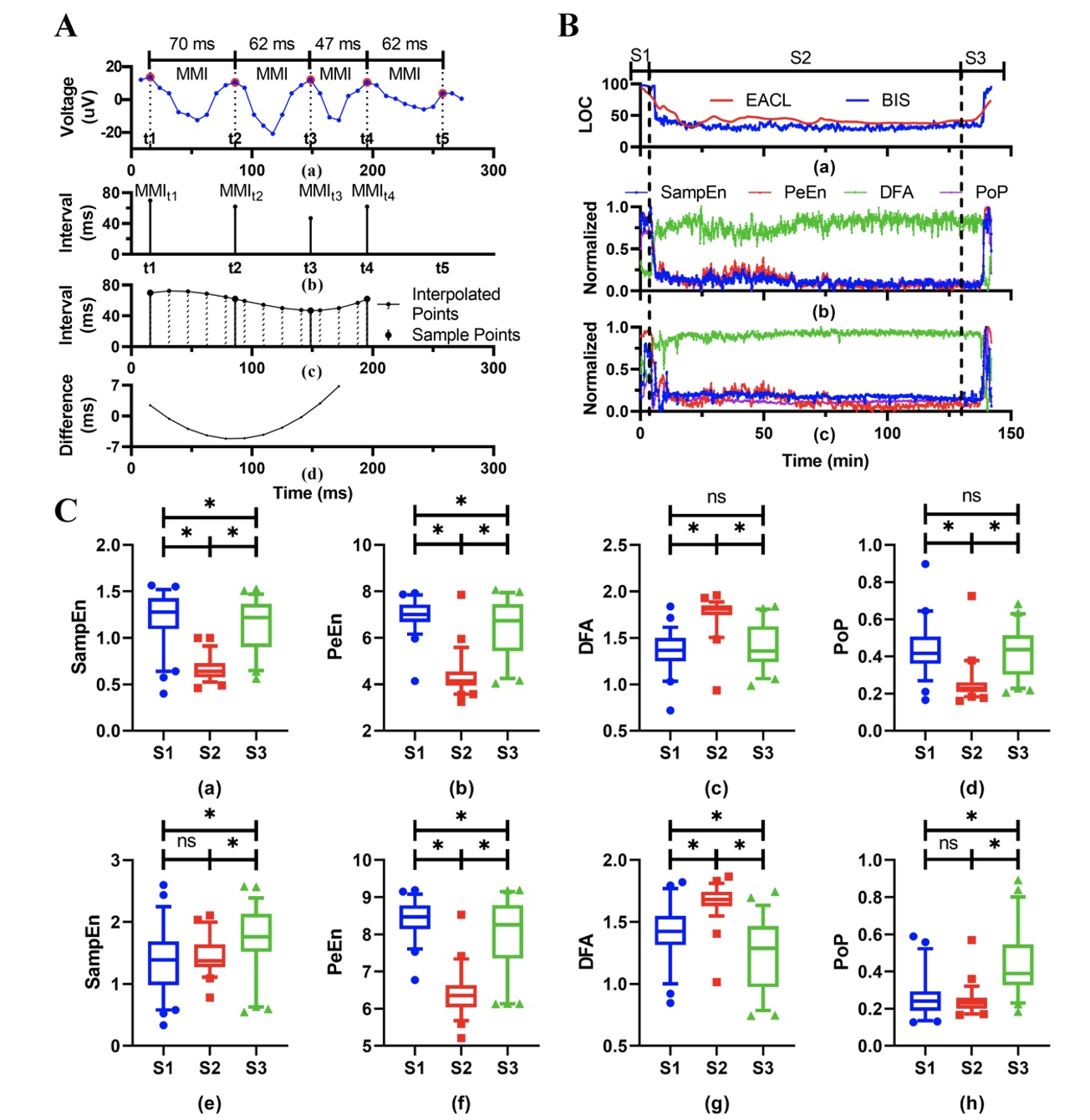Our postdoc Yi-Feng Chen proposed EEG variability analysis and nonlinear models for measuring the depth of anesthesia in IEEE Transactions on Instrumentation and Measurement (IF = 4.016).
Electroencephalogram (EEG) has been widely used to measure the effect of anesthetics on the central nervous system. However, EEG signals are very prone to artifacts. In this article, EEG variability (EEGV) is proposed, and nonlinear models are used to analyze EEGV for measuring the depth of anesthesia (DoA). First, the time intervals between successive local maxima of EEG are extracted. Then, resampling and differentiation are applied to reconstruct the EEGV time series. Sample entropy (SampEn), permutation entropy (PeEn), detrended fluctuation analysis (DFA), and Poincaré plots (PoPs) are used to analyze EEGV. The area under the curve (AUC) and the correlation analysis between proposed measures and conscious level indicated by the bispectral index and expert-labeled data are investigated. A long short-term memory network is further used to combine multiple features for predicting DoA. The results from 59 patients show that these four indices can differentiate awake and unconscious states and track changes in anesthesia states. SampEn, DFA, and PoP derived from EEGV achieve significantly higher AUCs and correlation coefficients than those derived from EEG. The fusion of EEG and EEGV can measure DoA more precisely. In summary, it is the first time that four nonlinear methods are used to analyze the reconstructed EEGV signals instead of traditionally used raw EEG, which provides a robust way to measure DoA.

Yi-Feng Chen, a postdoc of Southern University of Science and Technology, is the first author of this article. Mingming Zhang, assistant professor of Southern University of Science and Technology, is the co-corresponding author of this article. Southern University of Science and Technology is the first unit and communication unit.
